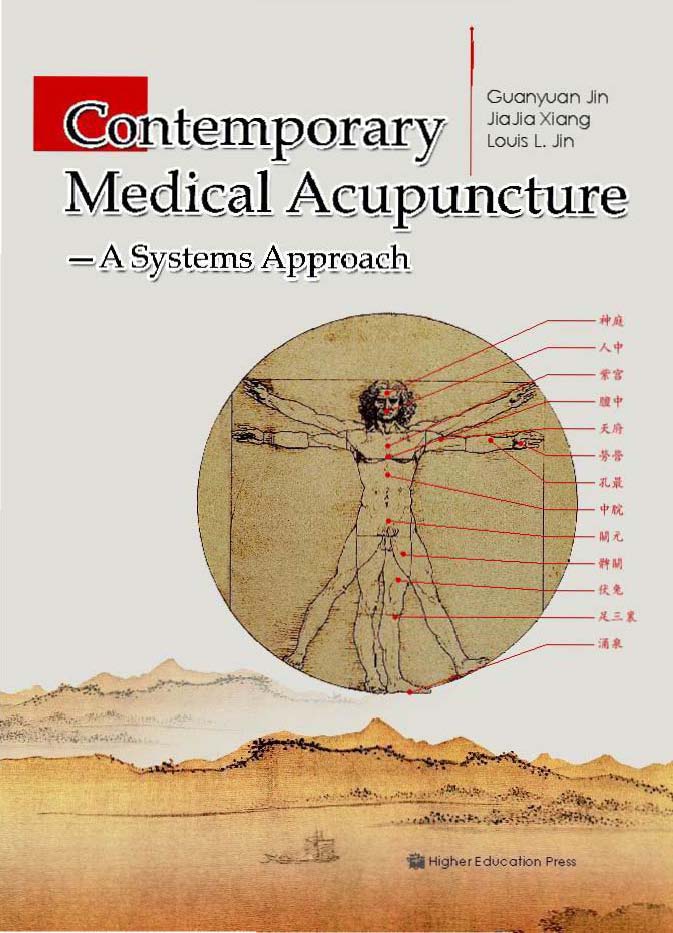化学基础(第4版)(影印版)
作者: Ralph A.Burns
出版时间:2004-03-25
出版社:高等教育出版社
- 高等教育出版社
- 9787040144604
- 1
- 249241
- 平装
- 16开
- 2004-03-25
- 1510
- 746
Preface xv
A Guide to UsingThis Text xxi
A Letter to the Student xxvii
1 Chemistry Is Everywhere
1.1 Chemistry in Our World Chemistry at Work Chemistry and the Automobile Industry
1.2 A Scientific Approach to Solving Problems
1.3 Hypothesis to Theory: The Scientific Method
1.4 Searching for Answers: Applied and Basic Research Chemistry in Our World Chemistry and Deep-Sea Diving
1.5 Chemistry: A Central Science in Your Education Chapter Summary Assess Your Understanding Key Terms Problems
2 Matter and Energy
2.1 Matter
2.2 Matter Has States
2.3 Elements and Compounds
2.4 Pure Substances and Mixtures
2.5 Physical and Chemical Properties and Changes A Closer Look Properties of Sulfur
2.6 The Law of Conservation of Mass Faces of Chemistry Chemistry Becomes a Quantitative Science
2.7 Energy and Chemical Change Chemistry in Our World Getting Rid of Solid Waste Chemistry in Our World Photosynthesis and Metabolism
2.8 The Law of Conservation of Energy
2.9 The Conversion of Matter to Energy Chapter Summary Assess Your Understanding Key Terms Problems Additional Problems
3 Fundamental Measurements
3.1 Metric and SI Units
3.2 Metric Length Measurement and Approximations
3.3 Conversion Factors and Dimensional Analysis
3.4 Metric Volume Measurement and Conversions
3.5 Metric Mass Measurement and Conversions
3.6 Conversion of Metric and English Units
3.7 Uncertainty in Measurement
3.8 Significant Figures
3.9 Scientific Notation
A Closer Look Counting Millions and Billions
A Closer Look How Much is One Part Per Billion?
3.10 Density and Specific Gravity
3.11 Measurement of Temperature
3.12 Temperature and Heat Energy Chapter Summary Assess Your Understanding Key Terms Problems Multi-Concept Challenge Problems Additional Problems
4 Elements, Atoms, and the Periodic Table
4.1 Elements: Ancient and Modern Theory
A Closer Look Searching for the Elements
4.2 Names and Symbols
4.3 Abundant and Rare Elements
4.4 The Periodic Table of Elements
4.5 Physical Properties of Elements
4.6 Atoms: Democritus to Dalton
A Closer Look Experimental Verification
4.7 Dalton’s Atomic Theory
4.8 Atoms and Subatomic Particles
4.9 Isotopes
4.10 Atomic Masses of the Elements
4.11 Counting with Moles
4.12 Molar Masses and Chemical Formulas: An Introduction Chapter Summary Assess Your Understanding Key Terms Problems Multi-Concept Challenge Problems Additional Problems
5 Atomic Structure: Atoms and Ions
5.1 The Discovery of Atomic Structure Faces of Chemistry The Curies
5.2 The Electromagnetic Spectrum Chemistry in Our World Our Atmospheric Ozone Layer and UV Radiation Chemistry in Our World Sunscreens and Sunblocks Chemistry at Work IR Spectrometers
5.3 Excited Electrons and Spectra Chemistry in Our World Fireworks and Flame Colors
5.4 Electrons in Atoms
Chemistry in Our World Excited Electrons and Spectra Faces of Chemistry Niels Bohr
5.5 The Quantum Mechanical Model of the Atom A Closer Look The Uncertainty Principle
5.6 Energy Levels of Electrons
5.7 Valence Electron and Lewis Symbols Faces of Chemistry Gilbert N. Lewis Electronic Structure: Optional Additional Insights
5.8 Energy Sublevels and Orbitals
5.9 Energy Sublevels and the Periodic Table
5.10 Electron Configurations and Orbital Diagrams Chapter Swnunary Assess Your Understanding Kev Terms Problems Multi-Concept Challenge Problems Additional Problems
6 Names, Formulas, and Uses of Inorganic Compounds
6.1 Monatomic Ions
6.2 Polyatomic Ions
6.3 Names and Formulas of Ionic Compounds
6.4 The Use of Parentheses in Chemical Formula Writing
6.5 Determining the Name of an Ionic Compounds from Its Formula
6.6 Names and Formulas of Binary Compounds of Nonmetals Chemistry in Our World Nitric Oxide, Memory, and Aging
6.7 Oxidation Numbers of Atoms in Polyatomic Compounds
6.8 Nomenclature of Acids and Their Salts Chemistrn in Our World Sodium Nitrite, a Closer Look
6.9 Hydrates
6.10 Some Chemicals and Their Uses Chemistry in Our World Sodium Carbonate, a Key Chemical Chapter Summary Assess Your Understanding Kev Terms Problems Multi-Concept Challenge Problems Additional Problems
7 Periodic Properties of Elements
7.1 Making Order Out of Chaos: Discoveries of Periodicity
7.2 The Periodic Table Today
7.3 Atomic and Ionic Size
7.4 Ionization Energy
7.5 Melting Point and Boiling Point Trends
7.6 Density and Conductivity Trends
7.7 A Survey of Elements by Groups Chemistry in Our World“Buckyballs”Discovery Merits 1996 Nobel Prize
7.8 Transition Metals
7.9 Inner Transition Metals
Chapter Summary Assess Your Understanding
Key Terms Problems
Multi-Concept Challenge Problems Additional Problems
8 Chemical Bonds
8.1 Ionic Bonds
8.2 Covalent Bonds
8.3 Electronegativity
8.4 Polar Covalent Bonds
8.5 Metallic Bonding
8.6 Conductivity, Solubility, and Other Clues to Chemical Bonding
8.7 Writing Lewis Electron-Dot Formulas Chemistry in Our World Carbon Dioxide and Carbon Monoxide
8.8 Shapes of Molecules: Balloon Models and Electron Pair Repulsion Chemistry in Our World Free Radicals and Ozone Layer Depletion
8.9 Water: A Bent Molecule
8.10 Ammonia: A Trigonal Pyramidal Molecule
8.11 Ammonium Ions and Coordinate Covalent Bonds
8.12 Methane: A Tetrahedral Molecule
8.13 Molecular Structures and the Periodic Table
8.14 Hydrogen Bonding Chapter Summary Assess Your Understanding Key Terms Problems Multi-Concept Challenge Problems Additional Problems
9 Chemical Quantities
9.1 Formula Weights and Molecular Weights
9.2 Moles and Molar Masses A Closer Look How Big Is Avogadro’s Number?
9.3 Composition Calculations
9.4 Mass and Mole Conversions
9.5 Calculations Involving Avogadro’s Number
9.6 Molarity
9.7 Empirical Formulas and Molecular Formulas
9.8 Determination of Empirical Formulas
9.9 Determination of Molecular Formulas
Chapter Summary Assess Your Understanding
Key Terms Problems
Multi-Concept Challenge Problems Additional Problems
10 Chemical Reactions
10.1 Chemical Reactions and Chemical Equations
10.2 What Balanced Chemical Equations Tell Us
10.3 Writing and Balancing Chemical Equations
10.4 Classifying Reactions
10.5 Combustion
Chemistry in Our World Combustion, Carbon Dioxide, and the Greenhouse Effect
10.6 Synthesis (Combination) Reactions
10.7 Decomposition Reactions
10.8 Reactions of Metals
10.9 Reactions of Nonmetals
10.10 Double-Replacement Reactions
10.11 Ionic and Net Ionic Equations
Chemistry in Our World Chemical Reactions in Limestone Caves
10.12 Neutralization: A Double-Replacement Reaction
Chapter Summary Assess Your Understanding
Key Terms Problems
Multi-Concept Challenge Problems Additional Problems
11 Stoichiometry: Calculations Based on Chemical
Equations
11.1 Mole Ratios from Chemical Equations
11.2 Mole-Mole Calculations
11.3 Calculations Involving Moles and Masses
11.4 Calculations Involving Molar Solutions
11.5 Limiting Reactant Calculations
11.6 Percent Yield
11.7 Energy Changes in Chemical Reactions
Chapter Summary Assess Your Understanding
Key Terms Problems
Multi-Concept Challenge Problems Additional Problems
12 Gases
12.1 The Atmosphere
12.2 The Kinetic Molecular Theory
A Closer Look Gas Pressure Units
12.3 Atmospheric Pressure
12.4 Boyle’s Law: Gas Pressure and Volume
12.5 Charles’s Law: Gas Volume and Temperature
12.6 Gay-Lussac’s Law: Gas Pressure and Temperature
Chemistry in Our World Popcorn and the Gas Laws
12.7 Standard Temperature and Pressure
12.8 The Combined Gas Law
12.9 Avogadro’s Law: Gas Volume and Moles
12.10 Molar Volume and Gas Density at STP
12.11 The Ideal Gas Law
12.12 Dalton’s Law of Partial Pressures
12.13 Gas Stoichiometry: Putting It All Together
Chapter Summary Assess Your Understanding
Key Terms Problems
Multi-Concept Challenge Problems Additional Problems
13 Liquids and Solids
13.1 Gases, Liquids, and Solids: Some Generalizations
13.2 Interionic and Intermolecular Forces
13.3 The Liquid State
13.4 Vaporization and Condensation
13.5 The Solid State
13.6 Melting and Freezing
13.7 Heating and Cooling Curves
13.8 Water: A Most Unusual Liquid
Chemistry in Our World Flash Freezing
Chapter Summary Assess Your Understanding
Key Terms Problems
Multi-Concept Challenge Problems Additional Problems
14 Solutions
14.1 What Is a Solution?
14.2 Solubility Terminology
14.3 The Solubility of Ionic Compounds
14.4 The Solubility of Covalent Compounds
14.5 Solubility Equilibria
14.6 Effects of Temperature and Pressure on Solubility
14.7 Solution Concentration Expressions
Chemistry in Our World Lead: How Much Is Too Much?
14.8 Colligative Properties of Solutions
14.9 Colloids
14.10 Osmosis and Dialysis (optional)
Chapter Summary Assess Your Understanding
Key Terms Problems Additional Problems
15 Reaction Rates and Chemical Equilibrium
15.1 Reaction Rates: Collision Theory
15.2 Factors That Control Reaction Rates
Chemistry in Our World Body Temperatures
Chemistry at Work Reaction Mechanisms
Chemistry al Work Automobile Catalytic Converters
15.3 Reversible Reactions and Equilibrium
15.4 Le Chatelier’s Principle
Chemistry at Work Ammonia Synthesis
15.5 The Effect of a Catalyst on a System
15.6 The Equilibrium Constant Expression
Chapter Summary Assess Your Understanding
Key Terms Problems
Multi-Concept Challenge Problems Additional Problems
16 Acids and Bases
16.1 Acids and Bases: The Arrhenius Theory
16.2 Strong and Weak Acids
Chemistry at Work Sulfuric Acid
16.3 Strong and Weak Bases
16.4 Reactions of Acids
Chemistry in Our World Acid Rain
Chemistry in Our World Is There Acid in Your Dough?
16.5 Reactions of Bases
Chemistry in Our World Antacid Chemistry
16.6 Bronsted-Lowry Definitions of Acids and Bases
16.7 Lewis Definitions of Acids and Bases
16.8 The Self-Ionization of Water
16.9 The pH Scale
16.10 Hydrolysis: Salts in Water
16.11 Buffers: Controlling the pH
Chemistry in Our World Buffers in the Blood
16.12 Acid-Base Titrations
Chapter Summary Assess Your Understanding
Key Terms Problems
Multi-Concept Challenge Problems Additional Problems
17 Oxidation and Reduction
17.1 Oxidation Numbers: A Review
17.2 Oxidation and Chemical Properties of Oxygen
Chemistry in Our World Oxygen
17.3 Reduction and Chemical Properties of Hydrogen
A Closer Look Hydrogen
17.4 Some Important Oxidizing Agents
Chemistry at Work Hydrogen Peroxide
Chemistry in Our World Antiseptics and Disinfectants
17.5 Some Important Reducing Agents
Chemistry in Our World Bleaching and Stain Removal
Chemistry at Work Photography
17.6 Oxidization and Reduction Half-Reactions
17.7 Electrolytic Cells
17.8 Voltaic Cells
A Closer Look Corrosion
Chapter Summary Assess Your Understanding
Kev Terms Problems
Multi-Concept Challenge Problems Additional Problems
18 Fundamentals of Nuclear Chemistry
18.1 Natural Radioactivity
18.2 Half-life
18.3 Measuring Radiation: The Units
18.4 Radiation Detectors
18.5 Background Radiation
Chemistry in Our World Radon-222 in Our Lives
18.6 Artificial Transmutations
18.7 Induced Radioactivity
Chemistry at Work Positron Emission Tomography (PET) Scans
18.8 Practical Uses of Some Radioisotopes
Chemistry at Work Dating the Shroud of Turin
18.9 Nuclear Fission: Splitting Atoms
18.10 Nuclear Power Plants
A Closer Look Nuclear Power
18.11 Nuclear Fusion
A Closer Look Nuclear Energy
Chapter Summary Assess Your Understanding
Key Terms Problems Additional Problems
19 Organic Chemistry
19.1 General Properties of Organic and Inorganic Chemicals
19.2 Alkanes: The Saturated Hydrocarbons
19.3 Using Structural Formulas
19.4 The Universal Language: IUPAC Nomenclature
Chemistry at Work Gasoline and Octane Ratings
19.5 Alkenes and Alkynes: Unsaturated Hydrocarbons
Chemistry in Our World Two Polyethylenes
19.6 Aromatic Hydrocarbons
19.7 Alcohols
Chemistry in Our World Ethyl Alcohol
19.8 Phenols
19.9 Ethers
19.10 Aldehydes and Ketones
19.11 Carboxylic Acids and Esters
19.12 Amines and Amides
Chapter Summary Assess Your Understanding
Key Terms Problems Additional Problems
20 Biochemistry
20.1 Carbohydrates
20.2 Lipids
Chemistry in Our World Saturated and Unsaturated Fats in Your Diet
20.3 Amino Acids and Proteins
20.4 Nucleic Acids
Chemistry in Our World Genetic Engineering
20.5 Some Vitamins and Hormones
Chapter Summary Assess Your Understanding
Key Terms Problems Additional Problems
APPENDIX A Metric and English Conversions and Some Physical Constants
APPENDIX B Basic Algebra Operations
APPENDIX C Exponential Notation
APPENDIX D Using Conversion Factors to Solve Problems
APPENDIX E Glossary
APPENDIX F Solutions to Exercises and Answers to Odd-Numbered Problems Credits for Photographs
Index









